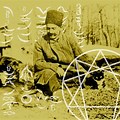Fragrant Transitions - 2




Fragrant Transitions - 2
These fragrances which occur at times of bereavement bring with them memories and comfort. Perhaps they are brought by angels, so we know that person is at one with the heavens and is sending this message of love. Perhaps the spirit of the dead person ahs come to say goodbye, to let us know they are there in the ether and are moving on.
Some would say it is just te mind playing tricks, but it is not just the aroma that comes. Associated with it is information which is often as clear as a bell, and comes not from within, but from without. The fragrance is reassuring because it is a link , but it is also transformational in that it can jolt us out of a behavioural mould, allowing us to move on, in some sense ourselves released.
This experience of 'scenting' happened to a Mrs Case of Exeter, England, who then went on to research the subject. In the private publication which resulted, she wrote:
People who have lost their sense of smell can smell it. Sometimes two people can smell it, and a third cannot. Sometimes many people share it; and often, as in a service in church, only one person smells it and the others notice nothing. Sometimes the scent is diffused, and at others localized.
One of her informant's a widow, wrote: 'I felt dreadful all that day and eventually prayed for the phenomena of scentings and warmth to return and next day it was back again and remained with me another week or two, gradually lessening as my burden of grief became more bearable.' Mrs Case notes that ' the sanctity derives from the agent, not the recipient'. meaning that these kind of extrasensory olfactory experiences relate to ordinary human beings who have passed on to that place which produces 'the odour of sanctity', signifying their special holiness.
Christian saints often emitted sweet-smelling fragrances, both when dead and alive. The sweet aroma of St Patrick apparently filled the room in which his body lay. The English St Milburga, a daughter of Merewald, Prince of Mercia, founded a monastery for virgins in Wenlock and died in the year 700. Her body lay in a vault in her church for 400 years and was almost forgotten, until a sweet-smelling perfume emitting from her tomb led to its rediscovery.
The seventeenth-century St Theresa of Avila spent twenty years as a contemplative sister of the Carmelite order, then became a reformer, before dying at the age of sixty-eight. Some years later, a sweet fragrance began to come from her grave, and the body was exhumed and found to be fresh and whole.
In the twelfth century, St Isiodore's body was disinterred forty years after his death, and again 400 years later, and both times was found not to have decayed and to be emitting a fabulous odour. And in the early seventeenth century, the coffin of the Russian St Juliana, when opened so one of her sons could be buried with her, was found to have a beautiful fragrance coming from it.
The Greek Orthodox St Demetrius left relics which exuded a sweet-smelling oily substance. This phenomenon, which also occurs with icons, is known as 'myrrh gushing' and the substance was said to have healing properties. A basilica was built on the St Demetrius' death and pilgrims used to collect the fragrant oil from a basin in the crypt which can be seen to this day in Thessaloniki.
The relics themselves stopped producing oil when they were stolen by Italian crusaders in the thirteenth century, and although returned to Greece in 1980 have not exuded it since, although a strong fragrance is often smelt around them. A 'myrrh'-exuding icon can be seen today at the monastery of Malevi near Tripoli in the Peloponnese.
A great number of saints were said to be fragrant during their lives. St Francis of Assissi is said to have smelled of lemon; St Rose of rose; St Catherine of Violets; and St Cajetan of orange blossom. St Lydwyne's aroma had several components, including cinnamon, ginger, clove, rose and violet; while the breath of the thirteenth-century Blessed Herman of Steinfeld was like a garden of fragrant flowers.
This 'odor of sanctity' as it is called, denotes the person had been elevated to some higher level of existence, one closer to divine. It puts people in a category other than that of the base, material life. The aromas have an unreal and powerful effect, seeming to break the aromatic rules, such as having no apparent source.
The historical records show people were concerned to highlight this, and explained these aromatic happenings occurred despite there being no incense, spices or fragrant ointments or balms around. Fragrance is supposed to be of the air, but in the case of the seventeenth-century Venerable Benedicta of Notre Dame du Laus, she was said to be so divinely fragrant, everything she touched became perfumed.
Aroma is supposed tom travel downwind, but an Indian saying goes, "The fragrance of the flower travels with the wind, but the odour of sanctity travels against the wind".
Experiences of smell phenomena are happening today, all around the world. If they only involved one person the unusual aromas could be dismissed as a figment of an overactive imagination. But often hundreds of people are 'witness' to the same aromatic event, and we can suppose that something is less explicable is going on.
Reference: The Fragrant Heavens: Valerie Ann Worwood
Articles-Latest
- Koran burning conviction sparks fury as blasphemy law 'returns to UK'
- Robert Francis Prevost - Pope Leo XIV
- Pope Francis' death follows recent health challenges. Here's what we know about how he died.
- Easter April 2025 - international Celebrations
- The Rule of the twelve psalms -Worthy is the Lamb
- Religion in Africa Before Christianity and Islam
- 6 The Origin of Yahweh
- Dumo Di Milano
- What Did the Crow Tribe Believe In: Discover The Beliefs!
- 7 Reasons Historic Christianity Rejects the Book of Enoch
- 8 Breathtaking Mountain Monasteries Around the World
- Ethiopian Bible is oldest and most complete on earth
- Muhammad Muhammad was a prophet and founder of Islam.
- World Day of the Poor – SVP Christmas Campaign 2024
- Pope Francis to open 5 sacred portals on Christmas Eve — for a ritual that’s never been done before
- The 144,000 in Revelation
- Over 73 dead bodies 'used for meditation', 600 crocs in a pond, found in two Thai temples
- Occultism: Western Occult Tradition
- What is a Mudra
- Blood Sacrifices: Ancient Rituals of Life and Death
Articles-Most Read
- Home
- Let There Be Light
- Plants that feel and Speak
- The Singing Forest
- The Singing Forest-2
- Introduction
- Meditation
- Using Essential Oils for Spiritual Connection
- Heaven Scent
- Plants that Feel and Speak-2
- Purification
- Making the Spiritual Connection
- Anointing
- Essential Oils: The unseen Energies
- The Sanctity of Plants
- The Aroma Of Worship - Introduction
- The Aroma Of Worship-Foreward
- Methods Of Use
- Spiritual Blending
- Handling and Storage







